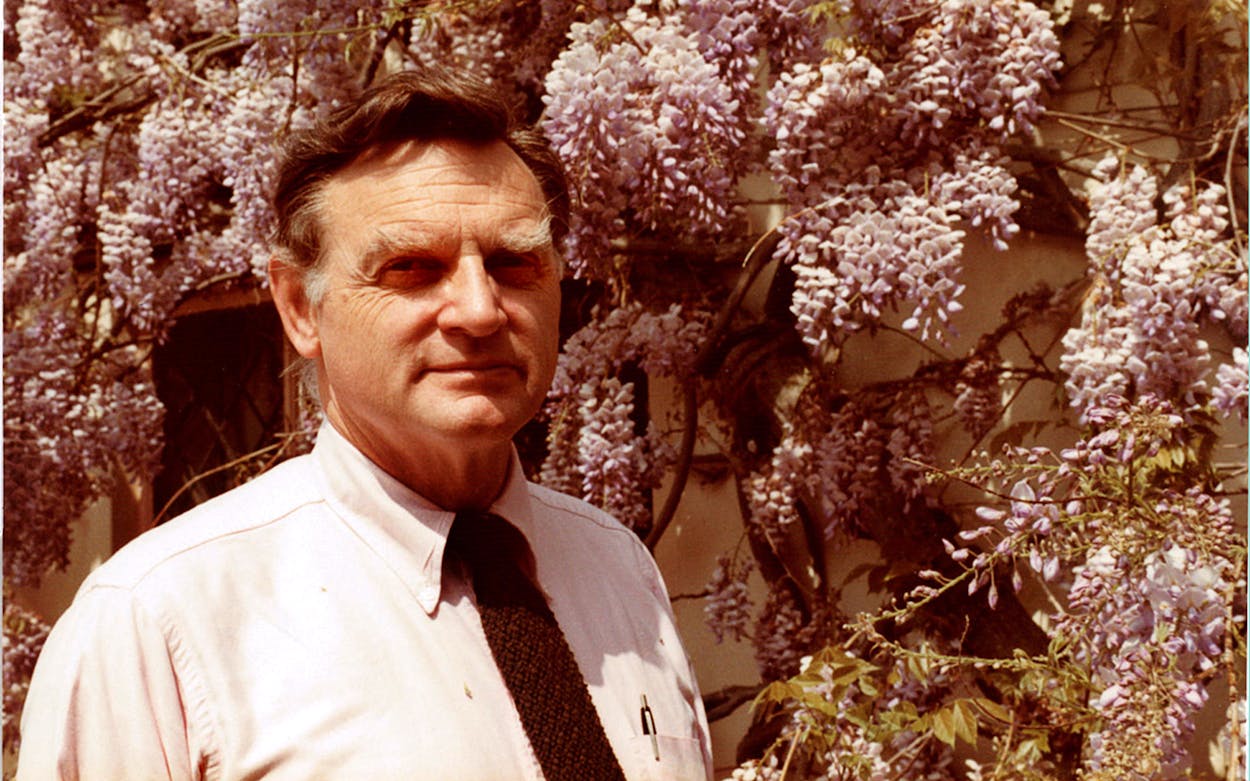John Goodenough, who died on Sunday in Austin as he neared his 101st birthday, is rightly being celebrated as one of the fathers of the lithium-ion battery, a world-changing invention that earned him a Nobel Prize and ushered in the era of cell phones and electric vehicles.
But there’s another reason to remember the lanky longtime Texan with an infectious, bellowing laugh. In a world seemingly obsessed with youth culture—in a state with the nation’s second-youngest population, trailing only Utah—his accomplishments serve as a reminder that life doesn’t end when you turn fifty. Sometimes so-called middle age is just the beginning.
The first time Goodenough was advised he was too old to do something was when he was 24—in 1946. After serving as a meteorologist for the Army during World War II, he enrolled at the University of Chicago to pursue an advanced degree in physics. “Don’t you know that anyone who has ever done anything significant in physics had already done it by the time he was your age?” a professor warned him.
He ignored that admonition and earned his PhD, focusing on the physics of metals. Into the sixties, he worked at the Massachusetts Institute of Technology and was part of a group that developed materials that enabled the ability of computers to store information, erase that, and store new information in its place. Looking back at his time at MIT, he later said that it “allowed me to find my own scientific voice and to contribute at a critical point to the development of the digital computer.”
This work might have earned him enough plaudits for a lifetime, but it was only the beginning for Goodenough. In 1976, at the age of 54, while an Oxford University professor, he began to work on batteries. A scientist at Exxon had built the first lithium-ion battery, but it would short-circuit and catch fire when it was recharged. Goodenough improved on the Exxon design, devising layers of lithium and cobalt oxide in the battery. The result was a more stable battery that could store more energy. A few years later, a Japanese scientist built on Goodenough’s breakthrough and developed the first commercial battery, which Sony sold in a camcorder in 1991. The technology eventually became a mainstay of modernity, powering everything from iPhones to Tesla sedans.
By then, Goodenough had moved to Austin, where he spent the remainder of his life as a professor at the University of Texas. In 2018, he and coauthors published research pointing toward a better battery. He took on new PhD students to supervise until as recently as a few years ago. “My mission is to try to see if I can transform the battery world before I die,” he told the Wall Street Journal. “When I’m no longer able to drive and I’m forced to go into a nursing home, then I suppose I will be retiring.”
A year later, Goodenough and two others were awarded a Nobel Prize in Chemistry for their work on the lithium-ion battery. (The other recipients were the Exxon scientist and the Japanese scientist from the Asahi Kasei chemical company.) Goodenough was the oldest person ever awarded a Nobel—for work he had undertaken when he was well into his sixth decade.
It should perhaps not be surprising that a scientist who made substantial contributions to developing rewritable computer memory and rechargeable batteries rebooted himself, more than once, during a long and productive life.








